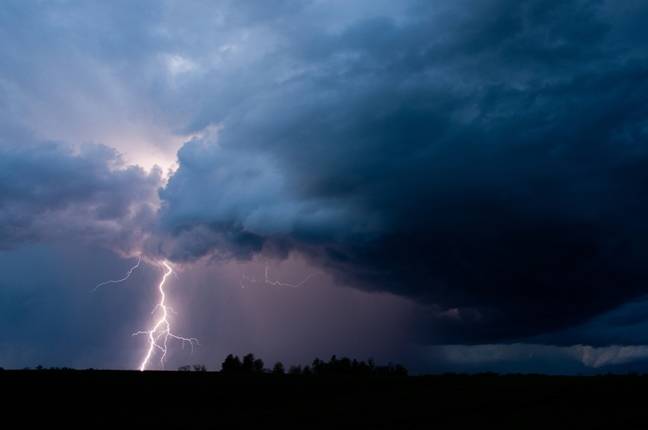science
La photosynthèse artificielle convertit le dioxyde de carbone en nourriture

Des chercheurs de l’Université technique de Munich ont mis au point une méthode durable pour produire l’acide aminé essentiel L-alanine à partir de dioxyde de carbone. Ce processus utilise la photosynthèse artificielle, convertissant le dioxyde de carbone en méthanol puis en L-alanine. Cette nouvelle méthode nécessite moins de terres que l’agriculture traditionnelle, soulignant le potentiel de combiner la bioéconomie avec l’économie de l’hydrogène pour un avenir plus durable.
Des chercheurs produisent un acide aminé important à partir du gaz à effet de serre CO2
- La demande alimentaire croissante dans le monde
- Procédé biotechnologique utilisant du méthanol comme produit intermédiaire
- Moins de terrain nécessaire pour faire pousser la plante
S’assurer que la population mondiale sans cesse croissante est nourrie tout en protégeant l’environnement sont des objectifs souvent contradictoires. Aujourd’hui, des chercheurs de l’Université technique de Munich (TUM) ont réussi à développer une méthode de fabrication synthétique de protéines alimentaires à l’aide d’un type de matériau synthétique.[{ » attribute= » »>photosynthesis. The animal feed industry is the primary driver of high demand for large volumes of nutritional protein, which is also suitable for use in meat substitute products.
A group led by Prof. Volker Sieber at the TUM Campus Straubing for Biotechnology and Sustainability (TUMCS) has succeeded in producing the amino acid L-alanine, an essential building block in proteins, from the environmentally harmful gas CO2. Their indirect biotechnological process involves methanol as an intermediate. Until now, protein for animal feed has been typically produced in the southern hemisphere with large-scale agricultural space requirements and negative consequences for biodiversity.

Artificial photosynthesis for environmentally friendly food production, from left: PhD student Vivian Willers und Prof. Volker Sieber. Credit: Otto Zellmer / TUM
The CO2, which is removed from the atmosphere, is first turned into methanol using green electricity and hydrogen. The new method converts this intermediate into L-alanine in a multi-stage process using synthetic enzymes; the method is extremely effective and generates very high yields. L-alanine is one of the most important components of protein, which is essential to the nutrition of both humans and animals.
Prof. Sieber, of the TUM Professorship for Chemistry of Biogenic Resources, explains: “Compared to growing plants, this method requires far less space to create the same amount of L-alanine, when the energy used comes from solar or wind power sources. The more efficient use of space means a kind of artificial photosynthesis can be used to produce the same amount of foodstuffs on significantly fewer acres. This paves the way for a smaller ecological footprint in agriculture.”
Bioeconomy and hydrogen economy in combination
The manufacture of L-alanine is only the first step for the scientists. “We also want to produce other amino acids from CO2 using renewable energy and to further increase efficiency in the realization process,” says co-author Vivian Willers, who developed the process as a doctoral candidate at the TUM Campus Straubing. The researchers add that the project is a good example of how bioeconomy and hydrogen economy in combination can make it possible to achieve more sustainability.
Reference: “Cell-free enzymatic L-alanine synthesis from green methanol” by Vivian Pascal Willers, Manuel Döring, Barbara Beer and Volker Sieber, 23 January 2023, Chem Catalysis.
DOI: 10.1016/j.checat.2022.100502

« Spécialiste de la télévision sans vergogne. Pionnier des zombies inconditionnels. Résolveur de problèmes d’une humilité exaspérante. »
science
Une exoplanète radioactive découverte lors d'une « tempête de marée parfaite »

Les forces de marée peuvent-elles provoquer un rayonnement de chaleur à la surface d’une exoplanète ? C'est ce qu'un Étude récente acceptable pour Revue astronomique Une équipe de chercheurs internationaux espère traiter les données collectées à partir d’instruments au sol pour confirmer l’existence d’une deuxième exoplanète résidant au sein du système exoplanétaire. HD 104067, tout en utilisant la mission Transiting Exoplanet Survey Satellite (TESS) de la NASA pour identifier également une exoplanète candidate supplémentaire. Ce qui est unique à propos de cette planète candidate, qui orbite plus profondément que les deux autres, est que les forces de marée émergeant des deux exoplanètes les plus externes font probablement rayonner la surface de la candidate avec une température de surface atteignant 2 300 degrés Celsius (4 200 degrés). Fahrenheit), que les chercheurs appellent la « tempête de marée parfaite ».
ici, L'univers aujourd'hui Discute de cette recherche fascinante avec Dr Stephen Kane, professeur d'astrophysique planétaire à l'Université de Californie à Riverside et auteur principal de l'étude, concernant les motivations derrière l'étude, les résultats importants, l'importance des aspects de « tempête de marée » et des recherches de suivi, ainsi que les implications de ce système pour l'étude d'autres systèmes exoplanétaires. Alors, quelle était la motivation derrière cette étude ?
« L'étoile (HD 104067) était connue pour abriter une planète géante sur une orbite de 55 jours, et j'ai une longue histoire d'obsession pour les systèmes connus », explique le Dr Kane. L'univers aujourd'hui. «Lorsque TESS a détecté une planète potentielle en transit de la taille de la Terre sur une orbite de 2,2 jours (TOI-6713.01), j'ai décidé d'examiner plus en détail le système. Nous avons collecté toutes les données du vaisseau spatial et avons découvert qu'il y avait une autre planète (de masse Uranus) en orbite. sur une orbite de 13 jours. Cela a donc commencé avec les données TESS, et le système est devenu plus intéressant à mesure que nous l'étudiions.
L'histoire du Dr Kane dans la recherche sur les exoplanètes comprend d'innombrables structures du système solaire, en particulier celles contenant des exoplanètes très excentriques, mais comprend également des travaux de suivi après confirmation de la présence d'exoplanètes dans le système. Plus récemment, il fut le deuxième auteur de Stade Discussion sur la structure révisée du système HD 134606, ainsi que sur la découverte de deux nouvelles super-Terres au sein de ce système également.
Dans cette dernière étude, le Dr Kane et ses collègues ont utilisé les données des instruments HARPS (High Resolution Radial Velocity Planet Search), du spectromètre Echelle haute résolution (HIRES) et de la mission TESS susmentionnée pour vérifier les propriétés et les paramètres des deux. L'étoile mère, HD 105067, et les exoplanètes correspondantes en orbite autour d'elle. Cependant, outre la découverte d’exoplanètes supplémentaires au sein du système, comme le mentionne le Dr Kane, quels sont les résultats les plus importants obtenus par cette étude ?
dit le Dr Kane L'univers aujourd'hui« Le résultat le plus surprenant de notre travail a été que la dynamique du système lui a fait subir des effets de marée massifs sur une période de 2,2 jours, similaires à ceux subis par Io. Cependant, dans ce cas, TOI-6713.01 subit une énergie de marée de 10 millions. fois supérieur à Io, ce qui donne 2600K. [2,300 degrees Celsius (4,200 degrees Fahrenheit)] Température superficielle. Cela signifie que la planète brille réellement aux longueurs d’onde de la lumière.
La lune de Jupiter, Io, est le corps planétaire le plus volcaniquement actif du système solaire, qui est produit par le réchauffement des marées provoqué par l'immense gravité de Jupiter tout au long de l'orbite légèrement excentrique (allongée) de 1,77 jours d'Io. Cela signifie que Io s'approche de Jupiter à certains points et s'en éloigne à d'autres points, provoquant respectivement la compression et l'expansion d'Io. Pendant des millions d'années, cette friction constante à l'intérieur d'Io a réchauffé son noyau, donnant naissance aux centaines de volcans qui composent la surface d'Io, ainsi qu'à l'absence de cratères d'impact visibles. Comme le note le Dr Kane, cette nouvelle exoplanète candidate « connaît 10 millions de fois plus d’énergie de marée que Io », ce qui pourrait soulever des questions supplémentaires concernant son activité volcanique ou d’autres processus géologiques. Par conséquent, quelle est la signification des aspects « tempête de marée » du TOI-6713.01 ?
dit le Dr Kane L'univers aujourd'hui« La raison pour laquelle TOI-6713.01 est soumis à de fortes forces de marée est due à l'excentricité des deux planètes géantes extérieures, forçant également TOI-6713.01 à se placer sur une orbite excentrique. Ainsi, j'ai fait référence à la planète comme étant prise dans une pleine tempête de marée. .»
Le système HD 104067 avec deux exoplanètes géantes forçant le TOI-6713.01 le plus intérieur dans une « tempête de marée parfaite » rappelle un peu les trois premières lunes galiléennes de Jupiter, Io, Europe et Ganymède, en ce qui concerne leurs influences gravitationnelles les unes sur les autres tout au long de leur vie. orbites. . Cependant, il existe quelques différences, puisque l'immense gravité de Jupiter est la principale force à l'origine de l'activité volcanique de Io, et que les trois lunes sont situées dans ce que l'on appelle Résonance orbitaleCe qui signifie que les orbites sont proportionnelles les unes aux autres. Par exemple, pour quatre orbites d'Io, il y a deux orbites d'Europe et une orbite de Ganymède, ce qui rend leur résonance orbitale 4:2:1, ce qui amène chaque lune à exercer des influences gravitationnelles régulières l'une sur l'autre. Ainsi, bien que l’aspect tempête de marée sur TOI-6713.01 soit causé par l’excentricité des géantes extérieures, comment cela se compare-t-il à la relation entre Io, Europe et Ganymède ?
« La résonance de Laplace des lunes de Galilée crée une configuration particulièrement forte, car l'alignement régulier des trois lunes intérieures force régulièrement Io sur une orbite excentrique », explique le Dr Kane à Universe Today. « Le système HD 104067 n'est pas en résonance mais l'est. toujours capable de produire une configuration énergétique.
Comme mentionné, TOI-6713.01 a été découvert à l'aide de la méthode de la vitesse radiale, également connue sous le nom de spectroscopie Doppler, ce qui signifie que les astronomes ont mesuré de minuscules changements dans le mouvement de l'étoile mère lorsqu'elle était légèrement entraînée par la planète pendant l'orbite de cette dernière. Ces changements subtils font vaciller l'étoile mère lorsque les deux objets s'attirent, et les astronomes utilisent des spectrographes pour détecter les changements dans cette oscillation lorsque l'étoile se rapproche et s'éloigne de nous pour trouver des exoplanètes. Cette méthode s'est avérée très efficace pour trouver des exoplanètes Cela représente environ 20 pour cent Sur le nombre total d'exoplanètes confirmées jusqu'à présent, et La première exoplanète en orbite autour d’une étoile comme la nôtre Il a également été découvert grâce à cette méthode. Cependant, malgré l’efficacité de la vitesse radiale, l’étude note que TOI-6713.01 « n’a pas encore été confirmé », alors quelles observations supplémentaires seraient nécessaires pour confirmer son existence ?
dit le Dr Caines L'univers aujourd'hui« La planète étant si petite, elle est difficile à détecter à partir des données de vitesse radiale. Cependant, le transit semble propre et nous avons exclu la possibilité d'une contamination stellaire supplémentaire, mais nous sommes tout à fait convaincus que la planète existe à ce stade. .»
Cette étude intervient alors que le nombre total de systèmes exoplanétaires s'élève à environ 4 200, avec un nombre d'exoplanètes confirmées supérieur à 5 600 et plus de 10 100 exoplanètes candidates également en attente de confirmation. Il a été constaté que ces structures de système diffèrent considérablement de notre système solaire, qui est constitué de planètes telluriques (rocheuses) les plus proches du Soleil et de géantes gazeuses situées sur des orbites beaucoup plus éloignées. Les exemples comprennent Jupiter chaud Cette orbite dangereusement proche de leur étoile mère, certains en quelques jours seulement, et d'autres systèmes Il comprend sept exoplanètes de la taille de la Terreet certains d'entre eux tournent à l'intérieur Zone habitable. Alors, que peut nous apprendre cette structure unique du système solaire sur les systèmes exoplanétaires en général, et que reflètent les autres systèmes exoplanétaires ?
dit le Dr Kane L'univers aujourd'hui« Ce système est un excellent exemple des environnements extrêmes dans lesquels les planètes peuvent se trouver. Il y a eu plusieurs cas de planètes telluriques proches de leur étoile et chauffées par l'énergie de l'étoile, mais très peu de cas où l'énergie marémotrice fait fondre la planète. l'intérieur. »
La découverte potentielle d'une exoplanète en orbite dans une « tempête de marée parfaite » illustre une myriade de caractéristiques que présentent les exoplanètes et les systèmes exoplanétaires, tout en contrastant avec notre propre système solaire et ce que les astronomes en ont appris jusqu'à présent. S'il est confirmé, TOI-6713.01 continuera de façonner notre compréhension de la formation et de l'évolution des exoplanètes et des systèmes exoplanétaires, non seulement dans notre Voie lactée, mais également dans tout l'univers.
« L'univers est un endroit merveilleux ! » dit le Dr Kane L'univers aujourd'hui. « Ce qui est amusant dans ce projet en particulier, c'est que tout a commencé par « Hmm… ça pourrait être intéressant » et s'est ensuite transformé en quelque chose de bien plus fascinant que ce que j'aurais pu imaginer. Allez voir le spectacle, ne manquez jamais l'occasion de le faire ! poursuivez votre curiosité.
Comment cette exoplanète de tempête de marée nous apprendra-t-elle sur les exoplanètes et autres systèmes exoplanétaires dans les années et décennies à venir ? Seul le temps nous le dira, c'est pourquoi nous étudions !
Comme toujours, continuez à faire de la science et continuez à rechercher !

« Spécialiste de la télévision sans vergogne. Pionnier des zombies inconditionnels. Résolveur de problèmes d’une humilité exaspérante. »
science
Les astronomes présentent un nouveau modèle pour la formation de planètes « flottantes » récemment découvertes

La découverte récente d’une nouvelle classe potentielle de planètes lointaines et mystérieuses « flottantes » a suscité l’intérêt des astronomes depuis que de nouvelles images époustouflantes prises par le télescope spatial James Webb ont été partagées à la fin de l’année dernière.
Ces planètes candidates, connues sous le nom d'objets binaires de masse Jupiter (JuMBO), semblent tourner autour les unes des autres car elles flottent librement dans l'espace, sans être attachées à aucune étoile, ce qui contredit les théories dominantes sur le fonctionnement des systèmes planétaires.
Aujourd'hui, une nouvelle étude révolutionnaire réalisée par une équipe d'astrophysiciens de l'UNLV et de l'Université de Stony Brook a été publiée le 19 avril dans la revue Astronomie naturelleIl fournit un modèle convaincant de la façon dont ces organismes massifs se sont formés.
L’équipe a utilisé des techniques avancées, connues sous le nom de simulations directes à N corps, pour explorer comment les interactions au sein d’amas d’étoiles denses pourraient éjecter des planètes géantes qui restent liées entre elles par la gravité lorsqu’elles dérivent à travers la galaxie. Cette recherche importante fournit un modèle sur la façon dont ces mystérieux binaires se forment, comblant ainsi une lacune critique dans notre compréhension de l’évolution planétaire.
« Nos simulations montrent que des rencontres stellaires rapprochées pourraient éjecter spontanément des paires de planètes géantes de leurs systèmes d'origine, les obligeant à orbiter l'une autour de l'autre dans l'espace », a déclaré l'auteur de l'étude Yihan Wang, chercheur postdoctoral au Centre d'astrophysique du Nevada à l'UNLV. « Ces résultats pourraient changer radicalement notre perception de la dynamique planétaire et de la diversité des systèmes planétaires de notre univers. »
La recherche indique que de tels événements sont plus susceptibles de se produire au sein d’amas d’étoiles densément peuplés, ce qui suggère que les planètes binaires flottantes pourraient être plus courantes qu’on ne le pensait auparavant. Les propriétés de ces paires planétaires, telles que leur séparation et leur excentricité orbitale, fournissent de nouvelles informations sur les conditions environnementales violentes qui influencent la formation des planètes.
« Il présente les interactions stellaires dynamiques comme un facteur important dans le développement de systèmes planétaires inhabituels dans des environnements stellaires denses », a déclaré Rosalba Perna, co-auteur de l'étude et professeur de physique et d'astronomie à l'Université de Stony Brook.
Selon les chercheurs, ces nouveaux travaux élargissent nos connaissances sur la formation planétaire et ouvrent également la voie à de futures observations utilisant le télescope spatial James Webb (JWST), qui pourraient fournir davantage de preuves à l'appui des prédictions de l'équipe.
« Comprendre la formation d'objets massifs nous aide à remettre en question et à améliorer les théories dominantes sur la formation planétaire », a déclaré Zhaohuan Zhu, astrophysicien à l'UNLV et co-auteur de l'étude. « Les observations du télescope spatial James Webb peuvent nous aider à y parvenir, en fournissant de nouvelles informations avec chaque observation qui nous aideront à mieux formuler de nouvelles théories sur la formation des planètes géantes. »
À propos du papier
« Planètes binaires flottant librement suite à leur éjection lors de rencontres stellaires rapprochées», a été publié le 19 avril dans le magazine Astronomie naturelle.

« Spécialiste de la télévision sans vergogne. Pionnier des zombies inconditionnels. Résolveur de problèmes d’une humilité exaspérante. »
science
Aperçu de la croissance des plantes et des maladies humaines

Un criblage de suppresseur génétique identifie le RdDM comme une voie majeure pour le silençage épigénétique induit par une expansion répétée. une, Phénotypes (indiqués par leurs identifiants d'écran d'origine) des suppresseurs isolés par rapport à Bur-0. Les feuilles irrégulièrement faibles sont marquées par des flèches blanches chez le type sauvage Bur-0. Barres d'échelle, 2 cm. Brelatif III1 Niveaux d'expression de suppresseurs de gènes identifiés par criblage génétique. Les nombres représentent les identifiants d'écran d'origine et les gènes correspondants identifiés après le clonage sont indiqués ci-dessous. Niveaux d'expression moyens basés sur trois répétitions biologiques pour chaque lignée (à l'exclusion de Bur-0 et fug1où n = 5 et 4, respectivement). Astérisques Indiquez les points de données individuels. sLes valeurs sont basées sur une analyse de variance unidirectionnelle avec le test post hoc de Tukey, et les polices avec des lettres différentes sont significativement différentes les unes des autres (s <0,05). Les barres d'erreur représentent s.e.mC Exemple d'analyse SHOREmap utilisant 44-2 Définit une mutation dans Paul F. . Les allèles à haute fréquence (> 0,85) sont colorés en rouge et les croix rouges représentent les allèles causals putatifs. crédit:Plantes naturelles
(2024). est ce que je: 10.1038/s41477-024-01672-5 ×
Fermer Un criblage de suppresseur génétique identifie le RdDM comme une voie majeure pour le silençage épigénétique induit par une expansion répétée.une , Phénotypes (indiqués par leurs identifiants d'écran d'origine) des suppresseurs isolés par rapport à Bur-0. Les feuilles irrégulièrement faibles sont marquées par des flèches blanches chez le type sauvage Bur-0. Barres d'échelle, 2 cm.B relatif III1 Niveaux d'expression de suppresseurs de gènes identifiés par criblage génétique. Les nombres représentent les identifiants d'écran d'origine et les gènes correspondants identifiés après le clonage sont indiqués ci-dessous. Niveaux d'expression moyens basés sur trois répétitions biologiques pour chaque lignée (à l'exclusion de Bur-0 et fug1 oùn = 5 et 4, respectivement). Astérisques Indiquez les points de données individuels.sLes valeurs sont basées sur une analyse de variance unidirectionnelle avec le test post hoc de Tukey, et les polices avec des lettres différentes sont significativement différentes les unes des autres ( s<0,05). Les barres d'erreur représentent s.e.m C Exemple d'analyse SHOREmap utilisant 44-2Définit une mutation dans Paul F.. Les allèles à haute fréquence (> 0,85) sont colorés en rouge et les croix rouges représentent les allèles causals putatifs. crédit:
Plantes naturelles (2024). est ce que je: 10.1038/s41477-024-01672-5 Les biologistes de l'Université Monash ont mis en lumière les mécanismes moléculaires complexes responsables de l'inactivation des gènes provoquée par des répétitions étendues dans une étude internationale. publiéaujourd'hui dans
Plantes naturelles
.
Ce phénomène a été associé à un certain nombre de maladies génétiques, notamment l'ataxie de Friedreich chez l'homme, et provoque des anomalies de développement chez des plantes telles qu'Arabidopsis thaliana.
La recherche vise à comprendre le mécanisme par lequel les répétitions amplifiées provoquent l’inactivation des gènes, une procédure clé pour contrôler l’expression des gènes.
Les nouveaux composants nécessaires à ce processus de mise au silence ont été découverts par des chercheurs à l'aide d'un modèle végétal qui présente des symptômes de défauts de croissance à des températures plus élevées mais pas à des températures plus basses.
La protéase SUMO FUG1, le lecteur d'histone AL3 et la protéine chromodomaine LHP1 ont été identifiés comme les trois acteurs les plus importants, selon l'étude.
« Ces protéines se réunissent pour créer une unité de base requise pour l'inactivation des gènes résultant d'une expansion répétée », a déclaré le Dr Sridevi Sureshkumar, auteur principal de l'étude, qui dirige le groupe de recherche génétique du groupe de recherche fondamentale de l'école des sciences biologiques de l'université Monash.
« Notre recherche révèle le rôle essentiel que jouent ces protéines dans la coordination de l'inactivation génique résultant de répétitions étendues », a déclaré le Dr Sureshkumar.
« La connaissance de ces systèmes fait non seulement progresser notre compréhension de la biologie végétale, mais donne également un aperçu des maladies humaines », a-t-elle déclaré.
Au cours de la recherche, des méthodes modernes de criblage génétique et des tests à deux hybrides sur levure ont été utilisés afin de déterminer que FUG1, une protéase SUMO non caractérisée, joue un rôle important dans l’inactivation des gènes. Après une analyse plus approfondie, il a été démontré que FUG1 interagissait avec AL3, un lecteur d'histone connu pour se lier à des marques d'histone spécifiques associées à une expression génique efficace.
De plus, les chercheurs ont découvert que la protéine AL3 interagit avec LHP1, une protéine chromodomaine qui joue un rôle dans la propagation des marques d'histone restreintes. L'inversion de l'inactivation des gènes et la suppression des symptômes associés à une expansion récurrente se sont produites en raison de la perte de fonction de l'un de ces composants au cours de l'expérience.
« Ces résultats mettent en valeur l’importance des modificateurs post-traductionnels et des lecteurs d’histone dans la régulation épigénétique », a déclaré le Dr Sureshkumar.
Elle a déclaré : « Notre étude ouvre la voie à des recherches plus approfondies sur le rôle de ces protéines dans divers processus biologiques et maladies humaines. »
« Les résultats représentent non seulement des conséquences potentielles pour la santé humaine, mais contribuent également à notre compréhension de la biologie végétale, qui est déjà avancée. »
Le Dr Sureshkumar, qui a dirigé cette étude internationale incluant des institutions du Royaume-Uni, de Chine, du Canada, d'Inde et d'Australie, a déclaré que la collaboration multinationale les avait aidés à progresser dans divers aspects de cette recherche.
Le Dr Sureshkumar a déclaré que cette recherche pourrait ouvrir la voie au développement de nouvelles techniques thérapeutiques ciblant la dérégulation épigénétique chez les personnes atteintes de maladies génétiques. Plus d'information:Sridevi Sureshkumar et al, la protéase SUMO FUG1, le lecteur d'histone AL3 et la protéine chromodomaine LHP1 font partie intégrante du silençage génique induit par l'expansion de la réplication chez Arabidopsis thaliana. Plantes naturelles
Informations magazine : Plantes naturelles

« Spécialiste de la télévision sans vergogne. Pionnier des zombies inconditionnels. Résolveur de problèmes d’une humilité exaspérante. »
-
entertainment2 ans ago
Découvrez les tendances homme de l’été 2022
-
Top News2 ans ago
Festival international du film de Melbourne 2022
-
Tech1 an ago
Voici comment Microsoft espère injecter ChatGPT dans toutes vos applications et bots via Azure • The Register
-
science2 ans ago
Les météorites qui composent la Terre se sont peut-être formées dans le système solaire externe
-
science3 ans ago
Écoutez le « son » d’un vaisseau spatial survolant Vénus
-
Tech2 ans ago
F-Zero X arrive sur Nintendo Switch Online avec le multijoueur en ligne • Eurogamer.net
-
entertainment1 an ago
Seven révèle son premier aperçu du 1% Club
-
entertainment1 an ago
Centenaire des 24 Heures – La musique live fournit une bande-son pour la course








